I have a table where column names are like years "2020-05","2020-06", "2020-07" etc and so many years as columns.I need to select only the current month, next month and third month columns alone from this table.(DB : PostgreSQL Version 11)
But since the column names are "TEXT" are in the format YYYY-MM , How can I select only the current month and future 2 months from this table without hard-coding the column names.
Below is the table structure , Name : static_data

Required select statement is like this,The table contains the 14 months data as in the above screen shot like DATES as columns.From this i want the current month , and next 2 month columns along with their data, something like below.
SELECT "2020-05","2020-06","2020-07" from static -- SELECT Current month and next 2 months Required output:
